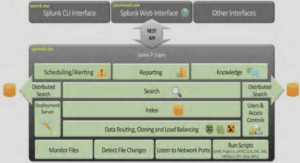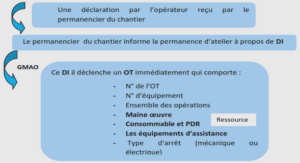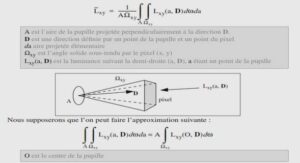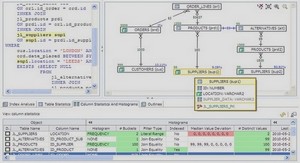Ad-hoc Control Strategies
Introduction
In this chapter two major interpolation methods will be applied to the pitch Method axis autopilot problem of an Air-to-air missile. These methods are the overview controller blending and observer/state feedback interpolation methods detailed in Sections 1.3.2.1 and 1.3.2.6 respectively. These methods have been selected over others (e.g. controller switching, state space matrix interpolation) due to the advantages they present. The controller blending method for example demands less computational effort and presents a rather small interpolation difficulty due to the fact that only output signals are interpolated whereas the observer/state feedback method is rather straightforward since it gives an estimate of the plant state while being a true MIMO method. In addition, it rises as a good extension to the controller blending method since by Youla parameterization (see Section 3.2) the same LTI controllers may be used for both methods and thus a comparison between the methods is easier to perform. These methods are compared to each other and to the more systematic gain blending method (detailed in the next chapter) using a realistic scenario and extensive simulations. The advantages and disadvantages of each method are stressed out and potential improvements are proposed. This chapter comes as a natural extension of Chapter 4 where the first two steps of the linearization-based gain scheduling procedure (see Section 1.3.1) were applied to obtain the trim control surface/operating point parametrization and the corresponding LTI/LPV models for each value of the scheduling vector, both for the Reichert missile and the re-entry vehicle. In this chapter, the three remaining steps are detailed, namely: the LTI controller computation, controller interpolation and controller implementation & validation. The chapter is organized in two main parts: the first one (see Section 5.3) presents the controller blending method whereas the second (see Section 5.4) presents the observer/state feedback method. Finally, the chapter ends with some conclusions. 5.2 Related Work A full bibliographic study on the subject of missile control is beyond the scope The of this work for two reasons: first, several methods have been proposed to cope origins with different problems and second, the missile autopilot design dates back to the 40’s and a huge number (maybe hundreds) of references on the subject can be found; in this monograph only the most notable works since the 90’s are cited. Perhaps one of the first works published1 is the one found in [16] exactly half a century ago. It concerns a simple angular rate/position feedback in order to stabilize the roll motion of an Air-to-air missile. Of course there was no question using even the simplest adaptive control scheme with the technology of the time.An adaptive control approach using parameter estimation and gain scheduling was used in [76] to obtain an autopilot for a flexible Air-to-air missile. An ad-hoc control scheme is used and its gains are scheduled by identifying the fin position pitching coefficient for the entire flight envelope of the missile. One of the first examples in gain scheduling applied on missile control is found in [112] in the early 90’s. In this work modern H∞-µ techniques are used to obtain LTI controllers which are put in observer/state feedback form. The solutions to the corresponding Riccati equations are then scheduled as a function of the angle of attack (AoA) and the Mach number in order to provide a time-varying gain-scheduled controller. In [17], the pitch axis missile nonlinear model is linearized and put in LFT form with the uncertainty block ∆ using the AoA. Linear controllers are designed (being robust with respect to the AoA) and scheduled for different values of the Mach number. The results are promising, even though the simulations are not too exhaustive. Another similar approach using tools of the µ-analysis to guarantee stability between the controller synthesis points is found in [37]. The controllers are optimal LQ regulators but the results were not too good. An early attempt to use a q-LPV modeling of a missile’s dynamics starting from a pure nonlinear model can be found in [123]. Then a particular type of trajectory scheduling is used in order to avoid the classical procedure of designing a finite number of LTI controllers for various design points. The controllers used are once again optimal LQ regulators, however the simulation results mostly demonstrate the feasibility of the approach. The A major advance in missile autopilot design was done by the classical work ‘Reichert’ missile found in [103]. This paper presents a benchmark pitch axis model of an airair missile (Reichert missile Benchmark or R’m’B) and uses classic H∞ control theory, along with a particular type of controller implementation found in more detail in [79], in order to remove the famous hidden coupling terms2 . The controllers are scheduled using directly the output and not the state (as well as the Mach number), and ZPK interpolation (see Section 1.3.2.3) and the overall control scheme is tested using extensive simulations. Similar ideas, along with a very small reference on the missile’s flight envelope can be found in [150] where instead of robust H∞, reduced order controllers are considered. In the same framework as in the previous two references, an observer/state feedback form of the central H∞ controller obtained by appropriate frequency weighting is used in [55] in order to construct a gain-scheduled controller. A modern approach using modern H∞ LPV control and LMI’s is the famous paper [13] (see equally [10]). In this paper the controllers are scheduled using two nonlinear functions (depending on the Mach, altitude and AoA respectively) inside a polytope. The overall scheme gives all the stability guarantees of this class of control methods but suffers also of all their inherent drawbacks (conservativeness, complexity).
Missile Control Objectives
The missile autopilot control goals-objectives will be detailed in this section. Missile Recall from Chapter 4 that the pitch axis missile nonlinear parameter-dependent model model Spd, is a SIMO system with its state being comprised by the angle of attack (AoA) α (in rad) and the pitch rate q (in rad/s); its control input being the tail elevator deflection angle δ (in rad) and the measure vector being comprised by the vertical acceleration η (in g’s) and the pitch rate q. The nonlinear model is parameterized also by the Mach number M considered as an internal variable (see Fig. 5.1) The missile’s rectangular flight envelope is formed due to the restrictions on Flight envelope the AoA and Mach number: −20◦ ≤ α ≤ 20◦ and 1.5 ≤ M ≤ 3 respectively and linear models may be computed for every α, M inside this envelope. Given though that the AoA is not available as a measurement, it should not be used directly when calculating trim conditions and linear models. The vertical acceleration η should be used in its stead, and thus the flight envelope can be re-parametrized as a function of η, M. The obtained flight envelope Γ [η,M] fe has now a more complicated non-convex trapezoidal form (see Fig. 4.5) and thus, for every value of M, the maximum admissible value for η (due to the limits on α) is given by (see also Section 4.1.2.3)4 : ηfe(M) ≃ −0.454M3 + 5.035M2 , α ≤ 0. (5.1) As it has been already detailed, a linear approximation of the aforementioned equation yields a superset of Γ [η,M] fe ; this new, slightly redundant5 , flight envelope (denoted as Γ [η,M] fe,lin ) has been used instead for simplicity, and it forms a trapezium whose four corners are the following pairs: [η, M] : [0, 1.5], [9.7969, 1.5], [0, 3], [0, 33.0559]. (5.2) The scheduling vector ̺ (being now formed by η, M) takes values inside Γ [η,M] fe,lin and parameterizes all the plants equilibrium points, trim control and linear models, as it has been detailed in the previous chapter.The control objective for the autopilot is simple enough: track step reference objectives signals ηr(t) of different amplitudes inside the flight envelope while the Mach varies with certain performance and robustness constraints. The performance constraints concern the output tracking characteristics (P1) and maximum control signal rates (P2) whereas the robustness constraints concern stability margins/high frequency open loop attenuation (R1) and robust stability under aerodynamic coefficient perturbations (R2). These constraints are taken from the benchmark paper [103] and are the following: P1: Track step commands on ηr(t) of various amplitudes with a time constant6 τ ≤ 0.35s, overshoot Mp ≤ 10% and steady state error ess ≤ 1%. P2: The tail elevator angle deflection rate | ˙δ| should be inferior to 25deg/s for 1g step reference commands. R1: The missile should exhibit robust stability inside all its flight envelope when the pitching moment coefficients (am, bm, cm) and dm vary around their nominal values by ±25%. R2: The linearized system should maintain at least 30dB attenuation for the gain amplitude of the obtained open loop transfer function, when the loop is opened just before the actuator. Performance The first two performance characteristics denote objectives that in the benchmark paper [103] are tested for a given simulation profile on the nonlinear system. This profile may sometimes be too favorable for the autopilot since variations of big amplitude are demanded for relatively high values of the Mach number where the controllers are in general more performing. The procedure often used by the designers is to calculate a small number of controllers and try to adapt the performance objectives only for these points, hoping that the design will carry on to the nonlinear system. There is no indication if the number of points considered is too small, too big or even if the points themselves are chosen in places where the nonlinear dynamics need treatment. Robustness The situation for the robustness objectives is the same: these objectives are most of the time satisfied (with a relative margin) at the synthesis points and the nonlinear gain-scheduled controller is exhaustively tested for stability when the aerodynamic coefficients are perturbed. This analysis is done using a Monte Carlo procedure for hundreds (in real world systems maybe several thousands) of operating points; thus guaranteeing in a way a posteriori the well-behaved of the controller. Other tests performed include linearization of the total open loop of the system plus the gain-scheduled controller in order to check its stability margins for frozen values of time along the desired reference trajectory of the scheduling vector.
Controller Blending
In this section the results from the first ad-hoc scheduling method, based on controller blending, will be presented. Recall from Section 1.3.2.2, that this method uses LTI controllers designed around a family of operating points inside the system’s operating domain and then interpolates the outputs of adjacent controllers in order to provide the final control signal. Initially in this work, only four controllers at the corners of the flight envelope Synthesis points Γ [η,M] fe,lin were used, but the performance of the gain-scheduled controller was not satisfactory. This was due to the fact that such a small number of controllers was inadequate to capture the variation of the plant dynamics inside the operating domain. Thus, it was decided to divide the flight envelope in four scheduling regions Γ1 , Γ 2 , Γ 3 , Γ 4 formed by nine synthesis points. These synthesis points, for each value ̺ i ,i = 1, .. . , 9 7 , are shown in Table 5.1.





